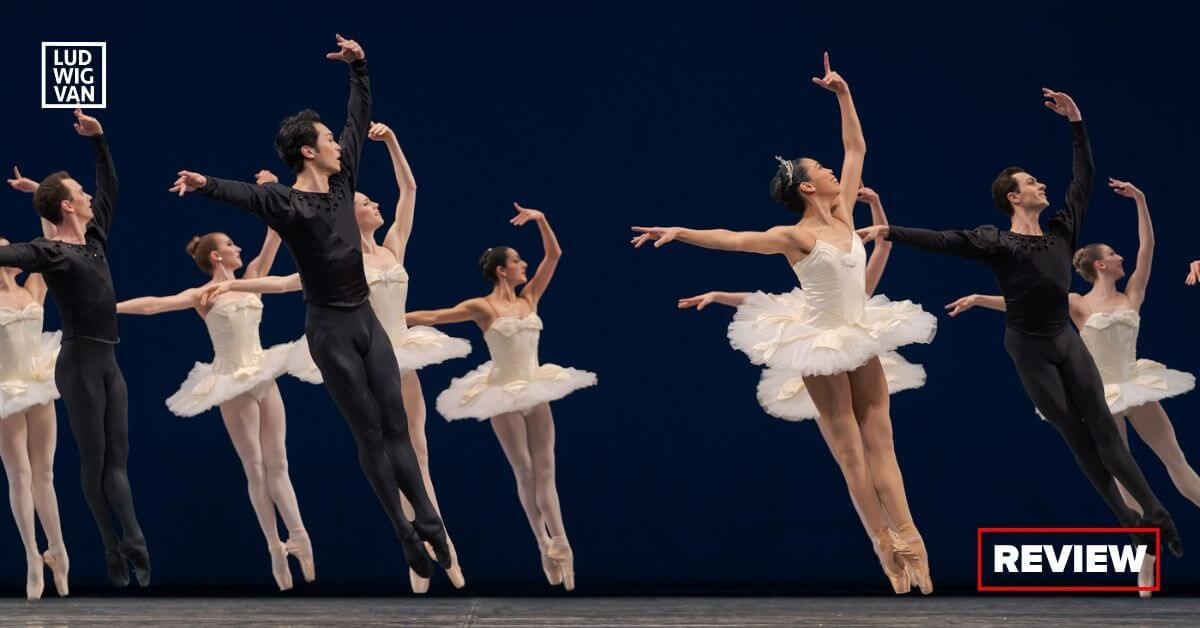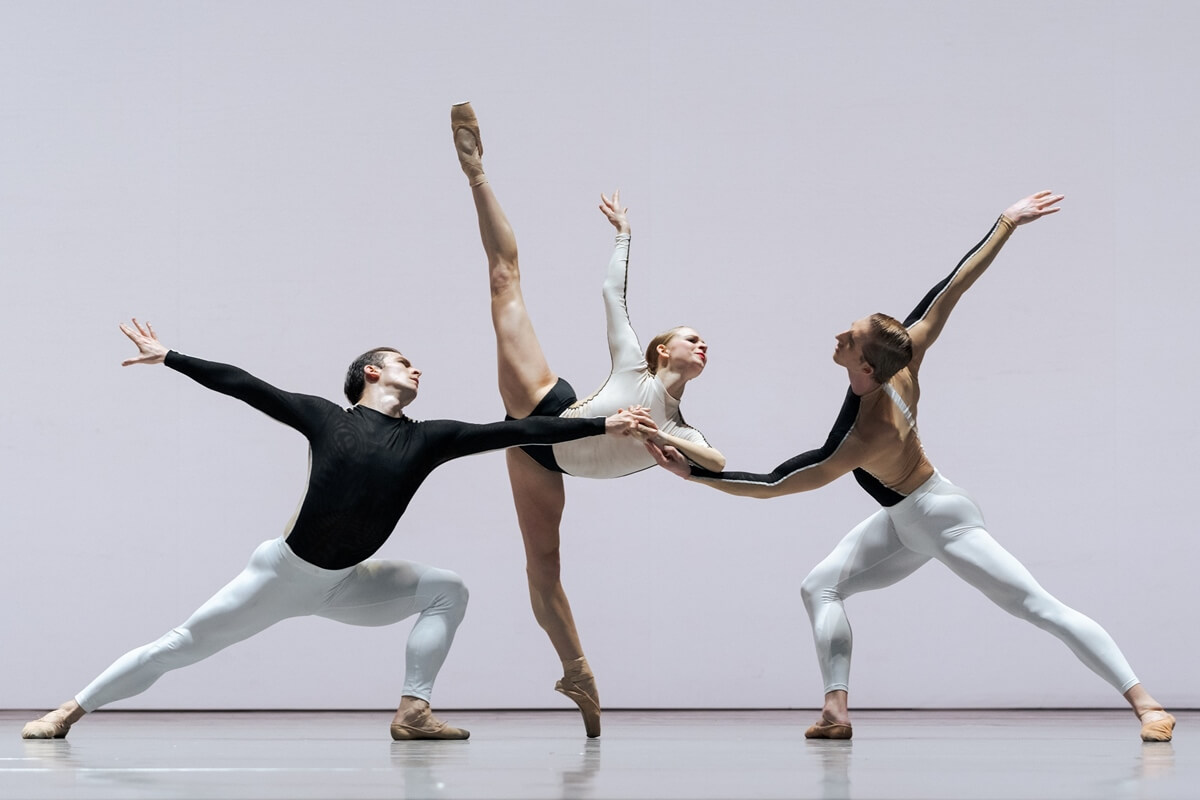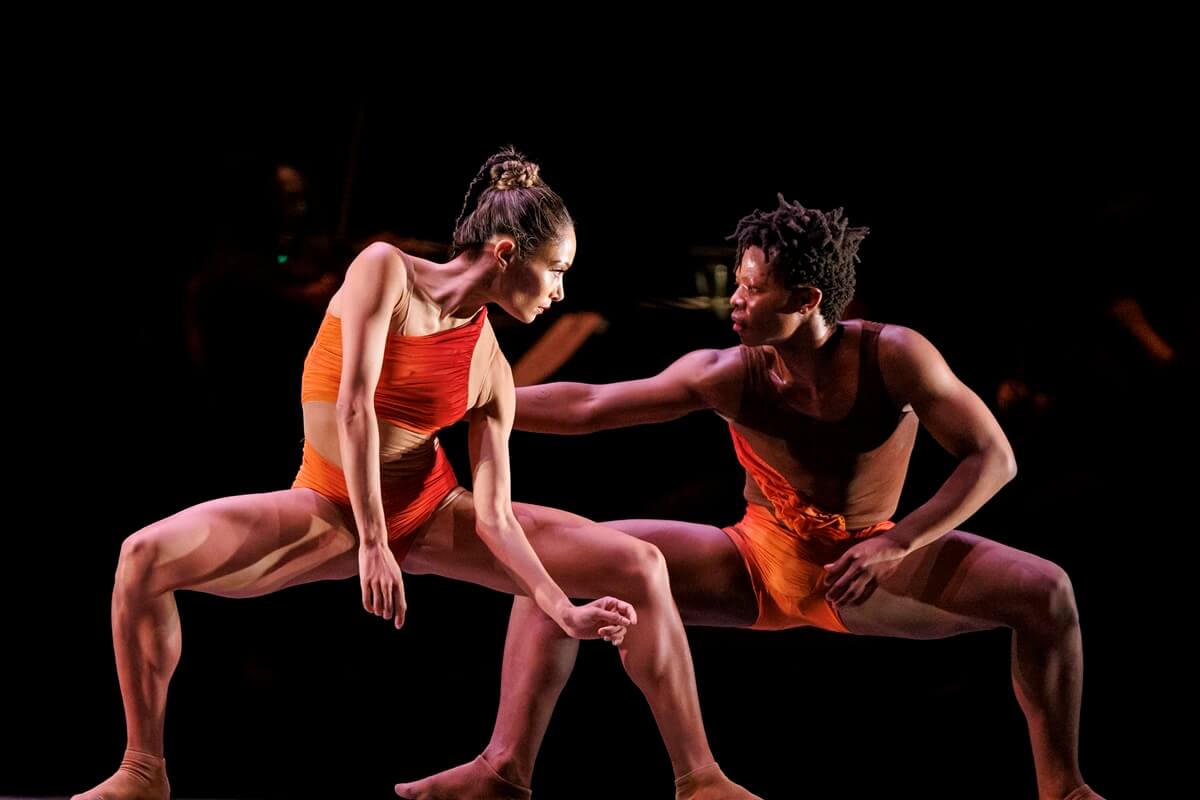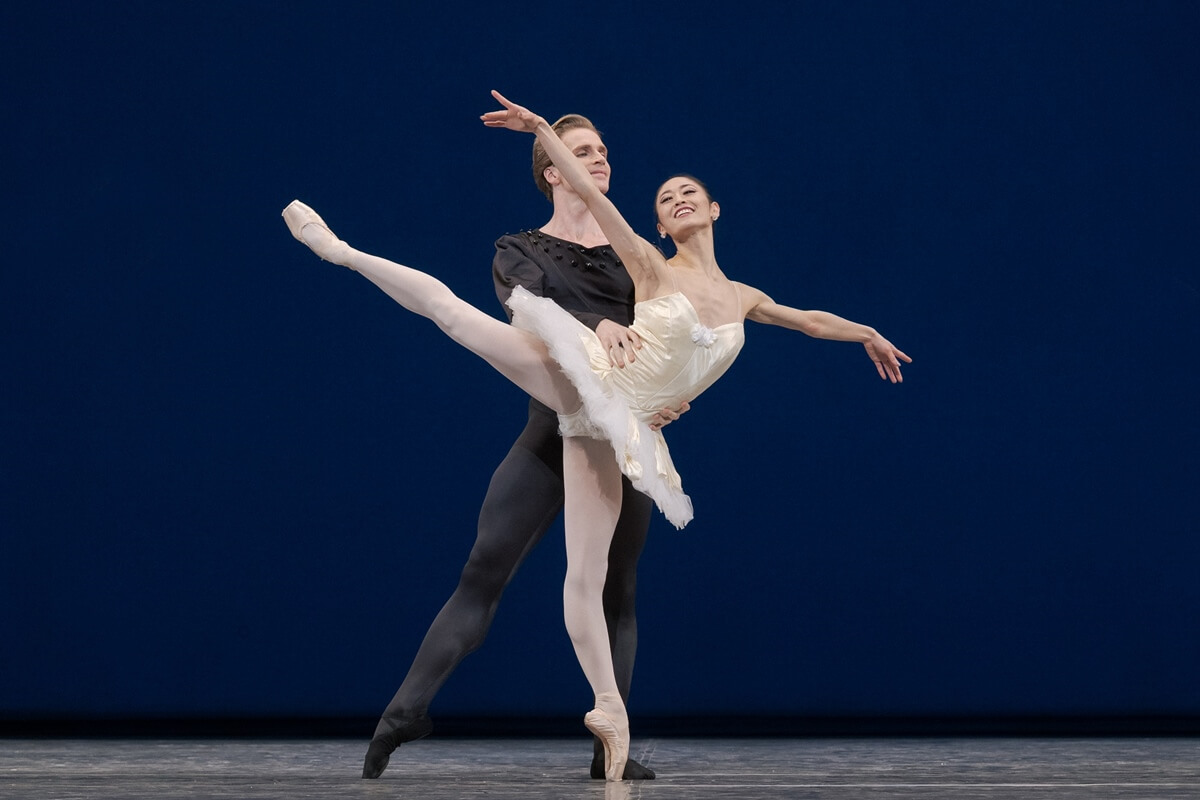
The National Ballet of Canada Winter Mixed Program/Symphony in C by George Balanchine, Alleged Dances by Rena Butler, and Anima Animus by David Dawson, Four Seasons Centre, Mar. 3 to Mar. 23. Tickets here.
Spencer Hack is the National Ballet’s newest Principal Dancer. How do I know that? It’s because National artistic director Hope Muir came on stage during the final curtain call of the Winter Mixed Program and announced it.
The only other time I witnessed this kind of surprise announcement was at the Paris Opera Ballet. Rudolf Nureyev had introduced the practice of onstage announcements of promotions when he was director of the company, and it has since become a tradition. Just as that French ballerina had been shocked and overwhelmed by the news of her elevation, so was said Mr. Hack, and the audience was delighted for him, as were his fellow dancers. Clearly, Muir is creating her own traditions at the National.
This announcement was the capstone of what had been a rather remarkable evening of dance. If ever there was a program designed to show off the company, this was the one. From the neoclassical Balanchine of the Symphony in C opening, through the post-modern movement of Rena Butler’s Alleged Dances, to the contemporary on point closing of David Dawson’s Anima Animus, it was flat-out, non-stop dance. Terpsichore was somewhere, beaming.

British choreographer Dawson is a current ballet darling, and getting one of his works is a very big deal. He created Anima Animus for San Francisco Ballet in 2018, where it was an immediate hit.
Apparently, Dawson was inspired by Jungian psychology, in particular, the concept that although women and men adopt traditional gender archetypes as their modus vivendi, within the psyche there is a contrast, namely, the contra sexuality. In a woman, this masculinity is the Animus, and in men, this feminine is called the Anima. Thus, our soul, that part of us that animates our life force, is androgynous.
For Dawson, this means blurring the gender lines, and so, as the program notes state, in the first and third movements of Italian composer Ezio Bosso’s Violin Concerto No. 1 (2017), the men dance female choreography, and the women dance male choreography. In the middle movement, Dawson returns to the pas de deux for contrast to the unisex, and while it is traditional male/female partnering, he also pushes the envelope of risk.
Now, dance is an interpretive art and each audience member experiences what they see in different ways, regardless what the choreographer intended. What I saw was a barrage of movement that was breathtaking in its conceit, not so much the changed gender lines (which, quite frankly, were not that clear to me), but rather the sheer force and power that each dancer was called upon to express on stage.
The women kept running, arms raised high, while the men did close work, like jumps and turns. It was the women — the two lead dancers, Calley Skalnik and Genevieve Penn Nabity, and their fellows, Jeannine Haller, Koto Ishihara, Monika Haczkiewicz and Clare Peterson — who dominated the stage with the width and breath of their movement, while the men seemed confined. Regardless, surgical precision was the key for both. Dawson also employed the wave technique, which added even more visual effects, as each dancer started a movement phrase just a beat after the person before.
I saw exquisite dance, executed by supremely conditioned bodies in coldly calculated, stunning movement. It also helped that Bosso’s concerto has a nervous, minimalist, repetitive quality that added to the tension of this dance of contrasts.
In the second movement partnering, which were actually pas de trois, Skalnik and Nabity were manhandled by Harrison James, Ben Rudisin, Naoya Ebe, and the newly promoted Hack. All the men are (now) Principal Dancers and experienced partners, and believe me, they had to be. Some of those lifts were downright dangerous, but always eyecatching, even astonishing.
Everything was in contrast. John Otto’s set, aided by lighting by James F. Ingalls, was light and shadow, that included a blazing white cyclorama, with the dancers sometimes in silhouette, sometimes exposed to opulent light. Yumiko Takeshima’s costumes were black and white, but with a bare back with a strip of material down the spine. In other words, the look and the movement was all off kilter and edgy.
The audience went crazy at the end. I’ve never heard the National audience so vocal. I can’t wait until Dawson does an original work for the National, and I sincerely hope that is in the cards.

Butler’s world premiere Alleged Dances takes its name from composer John Adams’ John’s Book of Alleged Dances (1994) which he wrote for the always forward-looking Kronos String Quartet. It’s a sly, fierce, relentless piece of music, which Butler has contrasted with slow, sinuous, sexy movement by nine dancers in slinky costumes (short shorts and various halters) by Hogan McLaughlin.
Butler is a young American choreographer on the rise, and one can see why. Her movement is quite original as she makes the body express itself in intriguing ways — shudders, shimmies, flexes, outthrusts, isolations — a sort of shake, rattle and roll, so to speak. It is also slow and deliberate so the audience can see the body movement in great detail.
The string quartet was on stage on a platform that moved from time to time, and the dancers seemed drawn to the musicians. Apparently, the music can be played in any order, and so Butler created three possible orders for the movement, changing as the music changed.
The program notes tell us that Alleged Dances is about evoking themes of memory and identity, but I also saw a people of great naivety, like primitives experiencing something for the first time (the musicians), and slowly coming out of hiding to confront something new. This image carried over into the various ensembles, duets and solos performed by the cast.
Nonetheless, however one interprets the piece, the dancers were wonderful in their execution, and it was amusing when they broke out of the dance, and were just themselves, before starting another movement chronology. Butler is a talent to watch, although I would have wished for a brighter lighting palette by designer Jeff Logue. The stage was very dark.
As for the dancers, the cast was a mix of principals, soloists and corps — listed in alphabetical order — Josh Hall, Arielle Miralles, Siphesihle November, Emma Ouellet, Noah Parets, Tina Pereira, Alexander Skinner, Teagan Richman-Taylor and Tene Ward. Again, the audience loudly expressed their appreciation of this new work.

As for Balanchine’s tutu Symphony in C, created for the Paris Opera Ballet in 1947, the bright and cheery music was composed by Georges Bizet when he was a 17-year-old student, the score not discovered until 1933. It was Igor Stravinsky who told Balanchine about the musical find.
The choreographic structure is very interesting. Each of the four movements is performed by a principal couple, two secondary couples, and a female corps of six to eight dancers. Thus, when all the dancers (over 50) are brought back on stage for the dazzling finale, you realize that this complement of people represents a very large chunk of the company itself.
Balanchine intended the work to be a celebration of the Paris Opera Ballet, and so it was for the National. Needless to say, mighty cheers followed this performance of the National showing off its classical chops.
The orchestra under Maestro David Briskin excelled themselves in their playing. I’m always in awe of Briskin knowing the correct pacing, when, for example, to go faster or slower, and he makes the dancers look good. The talented musical soloists all came from the ranks of the orchestra, with Concertmaster Aaron Schwebel masterfully performing the Bosso Violin Concerto for the Dawson, and joining colleagues, violinist Jamie Kruspe, violist Joshua Greenlaw and cellist Olga Laktionova, for the Adams’ string quartet. Fabulous playing all round.
We have to end with a fond farewell to retiring Joysanne Sidimus who has staged the Balanchine repertoire on the National for 38 years. She will be missed.
#LUDWIGVAN
Get the daily arts news straight to your inbox.



